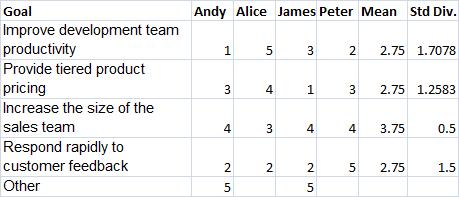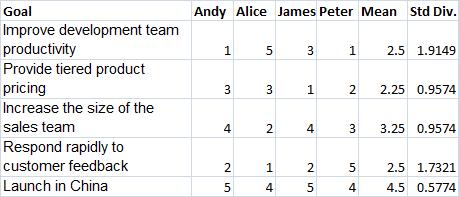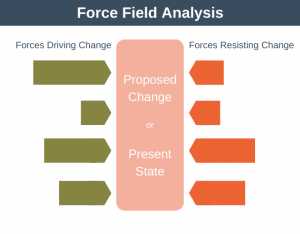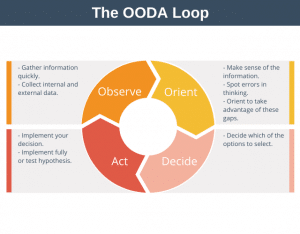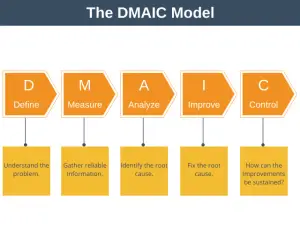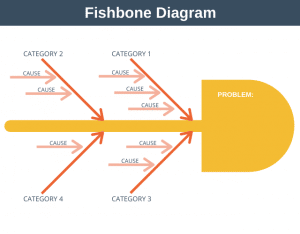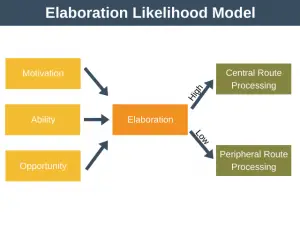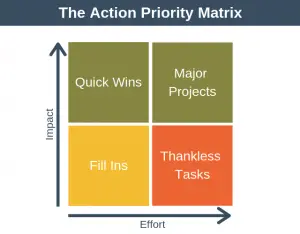When groups come together to make decisions, very often group dynamics can result in the team making the wrong decision because they fall into the trap of groupthink. Groupthink is essentially a type of behavior which can be exhibited by groups whereby they reach a perceived consensus on the majority view, without critically thinking or testing alternative hypothesis. Groupthink is particularly likely to occur in cohesive groups, groups with a directional leader, and groups working in isolation from outside information.
Groupthink can exist even in small teams, but when you want to reach consensus amongst a very large group (100s or even 1000s of people) yet more complexity is introduced. For one thing it can simply be impossible to get everyone into the same room. As examples, think about how you would go about getting an entire political party to reach consensus on the top 3 policies for the party to champion? Or even how you would get a large program team or project team to reach consensus on the 3 biggest market threats facing the success of the program?
Of course, you could argue that you don’t need to reach consensus in these examples, after all, a political party has a leader to make decisions, and a company has a CEO. But if you want to avoid the problems of group dynamics and groupthink, and the decision or problem is large enough, then it makes sense to consult with the experts within your organization and beyond to try to ensure that the best available decision is made. This is where the Delphi Method comes in.
Origins of the Delphi Technique
The Delphi Technique has its origins in the Cold War. The original “Project Delphi” was developed by the RAND Corporation and funded by the US Air Force to attempt to reach a consensus view on the impact of technological advances on warfare. Prior to Project Delphi other methods had been trialled such as trend extrapolation and quantitative models, but their shortcomings became quickly apparent.
The Delphi Process
Before we go into the general steps, it should be pointed out that the Delphi Model is a set (or family) of techniques, rather than one single clearly understood set of steps. Having said that, the key features of the Delphi Model are:
- A Facilitator: Provides the participants with initial questionnaires. Collects answers to these questionnaires and comments. The facilitator then filters out irrelevant information. This process avoids groupthink and the problems associated with group dynamics. The facilitator then creates the questionnaires for the second round and sends them to the participants.
- A series of information collection rounds: Here, participants can change their previous forecasts anonymously, see new information which is coming from other participants, and comment on this. In face to face meetings people tend to stick to their originally stated opinion to avoid loosing face, but with the Delphi Method they can change their mind at any moment.
- Participant anonymity: It is normal for participants to remain anonymous at all stages to enable honest opinions to come through the process.
The Delphi Technique can be difficult to understand from these three components alone, but a simple example should help clarify how it works.
Delphi Technique Example
Suppose we are a project manager or program manager and want to canvas opinion and then reach a consensus on how our product can be the most successful product in the marketplace. We decide we’re going to use the Delphi Method and that we’re going to invite the top 100 people within the organization to participate. We construct our questionnaire as follows, asking participants to rate each of the following options to achieve our goal:
- Improve development team productivity
- Provide tiered product pricing
- Increase the size of the sales team
- Respond rapidly to customer feedback
- Other … this option allows the participants to add their own ideas
Because there are 5 questions we allow people to assign points between 5-1 to each option, with 5 being the most important and 1 being the least. The diagram below shows a snapshot of how our participants might answer the questionnaire. I’ve included participant names in this example for the sake of clarity, but normally participants would remain anonymous.
Note that two of the participants commented that the best way to have the most successful product would be to expand into China, this is why you see the two 5 scores against the Other option. Ignore the Mean and Standard Deviation for now – we will examine those shortly. The facilitator collates the answers and resends resends the questionnaire (plus previous answers) to include the China option and also any pertinent comments from the participants. The next round of questions may have been responded to as follows:
We repeat this process of receiving feedback and sending out questionnaires until an agreed number of rounds have been completed, or the standard deviations are very low. Low standard deviations will tell us that we have a low variance for each particular item in the list. In our example above we can see that there is low variance for the “Launch in China” option, telling us that most people are in agreement as to how well this option will help us achieve our goal.
Once we get to the stage where we have low variance, we can then pick the items with the highest mean values to focus our effort on, to either repeat the process until we get consensus, or to discuss until we get consensus. The items in the list with the highest mean values will be those which the group of participants believes are the most crucial to ensuring the success of the organization.
In our example we can see that “Launch in China” has the highest mean value, meaning people perceive it as the best way to achieve our goal. Not only that, but it also has the lowest standard deviation, meaning that there is a consensus that this is the best way to achieve our goal.
Summary
The Delphi Technique is a tool which can be used to reach consensus amongst a group of people. It is suited to situations when you have many participants in the group and/or when you’re looking to avoid the problems of groupthink to enable the group to agree on the best possible way forward. The Delphi Technique originates from the Cold War period, and is a family of techniques rather than one single repeatable procedure.
